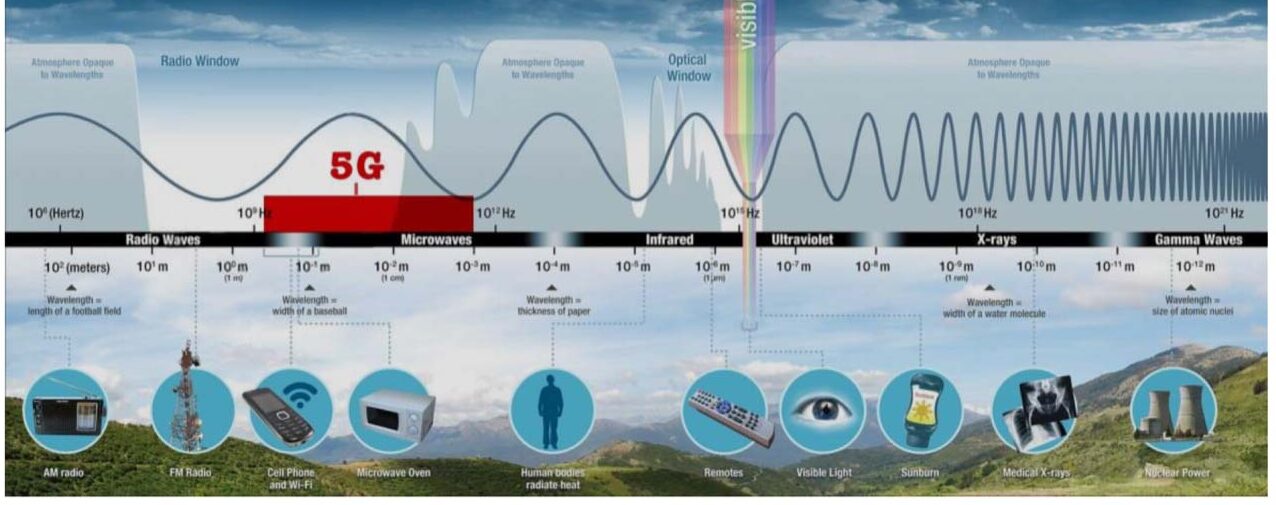The Science Behind the Campaign
Many people are not aware of the harmful effects of radio-frequency waves (RF) and their role in cancer and other serious medical conditions.
The fact that radiofrequency radiation was designated as a Group 2b carcinogen in 2011 by the International Agency for Research on Cancer based on increased incidence of certain types of brain tumours in heavier users of mobile phones was not communicated to the public. At this point, although there was clear human epidemiological evidence for the carcinogenicity of RF, there was a concern that the animal data required for a higher carcinogenic designation was insufficient. Therefore further animal studies were executed.
A 10-year $30 million dollar study from the National Toxicology Program (NTP) funded by the U.S. government, which analysed the effect of mobile phone radiation concluded ‘clear evidence’ of carcinogenesis.
Shortly following this, the highly esteemed Ramazzini Institute corroborated these findings by demonstrating the same types of tumours in response to much lower intensity base station type exposures Together, these two very large scale animal studies confirm the human epidemiological data already demonstrating carcinogenesis and as a result multiple independent experts and teams of experts have made clear that RF should now be designated as a Group 1 ‘known human carcinogen’.
The Scientific Committee on Health, Environmental and Emerging Risks (SCHEER) which provides scientific advice to the European Commission regarding public health, issued a statement identifying 5G impact as “high,” and that “the lack of clear evidence…of exposure guidelines to 5G technology leaves open the possibility of unintended biological consequences.”
“One aspect, for example, that is not well understood today is the unpredictable propagation patterns that could result in unacceptable levels of human exposure to electromagnetic radiation… Increasing long-term R&D efforts on 5G is essential to understand multiple propagation unknowns (e.g. measuring and controlling RF EMF exposure with MIMO at mmWave frequencies).”
Wyde, M.E. et al, National Toxicology Program Technical Report On The Toxicology And Carcinogenesis Studies In Hsd:Sprague Dawley SD Rats Exposed To Whole-Body Radio Frequency Radiation At A Frequency (900 Mhz) And Modulations (GSM And CDMA) Used By Cell Phones, 2018, National Institutes of Health Public Health Service U.S. Department of Health and Human Services
Falcioni et al.Report of final results regarding brain and heart tumors in Sprague-Dawley rats exposed from prenatal life until natural death to mobile phone radiofrequency field representative of a 1.8 GHz GSM base station environmental emission. Environ Res. 2018 Aug;165:496-503. doi: 10.1016/j.envres.2018.01.037.
Peleg et al, 2018 Radio frequency radiation-related cancer: assessing causation in the occupational/military setting. Environ Res. 2018 May;163:123-133. doi: 10.1016/j.envres.2018.01.003 Radio frequency radiation-related cancer: assessing causation in the occupational/military setting. Environ Res. 2018 May;163:123-133. doi: 10.1016/j.envres.2018.01.003
Danish engineer, Flemming Blicher MBA gives History of ICNIRP Guidelines
The NTP Cell Phone Study Explained - with Dr. Ron Melnick
Robert Scott Bell Talks with CHD's Dafna Tachover About 5G
"The truth about mobile phone and wireless radiation" - Dr Devra Davis
Dr. Magda Havas' Live Blood & Electrosmog
Cell Phone Radiation Causes Leakage of the Blood Brain Barrier Dr Leif Salford
Dr. Melnick and Dr. Davis Respond to the FCC on Cell Phone Radiation
History of ICNIRP Guidelines
ICNIRP are NOT making Safety Guidelines!
Thermal vs. Biological harmful effects
A Quick Tour of 5G
5G and ICNIRP 1998/2020

